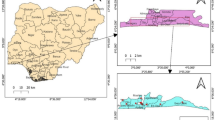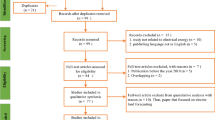Abstract
Transient stability assessment involves the determination of whether all generators in the power system would maintain synchronous operation when it is subjected to a large disturbance. Assessing the transient stability status of a power system in an accurate and timely manner is of high importance in order to plan and initiate relevant corrective control actions where required. The wide-area monitoring systems enable to acquire synchronized measurements of important system variables from geographically dispersed locations via the phasor measurement units (PMUs), which can be used for measurement-based transient stability assessment. In this work, a stacked ensemble model that uses post-contingency wide-area synchrophasor measurements of bus voltage magnitude, voltage angle, frequency and rate of change of frequency is proposed to classify the post-contingency transient stability status of a power system to be unstable or stable. The model includes four individual long short-term memory network classifiers as base-learners and a LightGBM classifier as a meta-learner. An important differentiation of this work is that the proposed method does not assume that each bus is equipped with a PMU. Furthermore, robustness of the proposed model is analyzed in the presence of measurement noise and against the scenario of missing measurements. The performance of the proposed ensemble model is investigated in two generic test systems, the Nordic and the 127-bus WSCC test systems, as well as the practical Turkish power system.








Similar content being viewed by others
References
Sharifian A, Sharifian S (2015) A new power system transient stability assessment method based on Type-2 fuzzy neural network estimation. Int J Electr Power Energy Syst 64:71–87. https://doi.org/10.1016/j.ijepes.2014.07.007
You D, Wang K, Ye L, Wu J, Huang R (2015) Transient stability assessment of power system using support vector machine with generator combinatorial trajectories inputs. Int J Electr Power Energy Syst 44(1):318–325. https://doi.org/10.1016/j.ijepes.2012.07.057
Wahab NIA, Mohamed A, Hussain A (2011) Fast transient stability assessment of large power system using probabilistic neural network with feature reduction techniques. Exp Syst Appl 38(9):11112–11119. https://doi.org/10.1016/j.eswa.2011.02.156
Tan B, Yang J, Pan X, Li J, Xie P, Zeng C (2017) Representational learning approach for power system transient stability assessment based on convolutional neural network. J Eng 13:1847–1850. https://doi.org/10.1049/joe.2017.0651
Chang HD, Chu CC, Cauley G (1995) Direct stability analysis of electric power systems using energy functions: theory, applications, and perspective. Proc IEEE 83(11):1497–1529. https://doi.org/10.1109/5.481632
Xue Y, Van Custem T, Ribbens-Pavella M (1998) Extended equal area criterion justifications, generalizations, applications. IEEE Trans Power Syst 4(1):44–52. https://doi.org/10.1109/59.32456
IEEE/IEC (2018) IEEE/IEC international standard—measuring relays and protection equipment—part 118-1: synchrophasor for power systems—measurements. IEC/IEEE 60255-118-1:2018 10.1109/IEEESTD.2018.8577045
Gomez FR, Rajapakse AD, Annakkage UD, Fernando IT (2011) Support vector machine-based algorithm for post fault transient stability status prediction using synchronized measurements. IEEE Trans Power Syst 26(3):1474–1483. https://doi.org/10.1109/TPWRS.2010.2082575
Mahdi M, Genc VMI (2017) Artificial neural network based algorithm for early prediction of transient stability using wide area measurements. In: 5th International Istanbul smart grids and cities congress and fair; Istanbul, Turkey. https://doi.org/10.1109/SGCF.2017.7947611
Zhang R, Wong KP, Xu Y, Dong ZY (2015) Post-disturbance transient stability assessment of power systems by a self-adaptive intelligent system. IET Gener Transm Distrib 9(3):296–305. https://doi.org/10.1049/iet-gtd.2014.0264
Li Y, Yang Z (2017) Application of EOS-ELM with binary jaya-based feature selection to real-time transient stability assessment using PMU data. IEEE Access 5:23092–23101. https://doi.org/10.1109/ACCESS.2017.2765626
Aghamohammadi MR, Abedi M (2018) DT based intelligent predictor for out of step condition of generator by using PMU data. Int J Electr Power Energy Syst 99:95–106. https://doi.org/10.1016/j.ijepes.2018.01.001
Kesici M, Saner CB, Mahdi M, Yaslan Y, Genc VMI (2019) Wide area measurement based online monitoring and event detection using convolutional neural networks. In: 7th international Istanbul smart grids and cities congress and fair; Istanbul, Turkey, pp 223–227. https://doi.org/10.1109/SGCF.2019.8782365
Yu JJ, Hill DJ, Lam AY, Gu J, Li VO (2018) Intelligent time-adaptive transient stability assessment system. IEEE Trans Power Syst 33(1):1049–1058. https://doi.org/10.1109/TPWRS.2017.2707501
Saner CB, Kesici M, Mahdi M, Yaslan Y, Genc VMI (2019) Wide area measurement-based transient stability prediction using long short-term memory networks. In: 7th international Istanbul smart grids and cities congress and fair; Istanbul, Turkey, pp 159–163. https://doi.org/10.1109/SGCF.2019.8782391
Hu W, Lu Z, Wu S, Zhang W, Dong Y, Yu R, Liu B (2019) Real-time transient stability assessment in power system based on improved SVM. J Mod Power Syst Clean Energy 7(1):26–73. https://doi.org/10.1007/s40565-018-0453-x
Wang H, Chen Q, Zhang B (2020) Transient stability assessment combined model framework based on cost-sensitive method. IET Gener Transm Distrib 14(12):2256–2262. https://doi.org/10.1049/iet-gtd.2019.1562
Chen Z, Han X, Fan C, He Z, Su X, Mei S (2019) A data segmentation-based ensemble classification method for power system transient stability status prediction with imbalanced data. Appl Sci 9(20):4216. https://doi.org/10.3390/app9204216
Zhou Y, Guo Q, Sun H, Yu Z, Wu J, Hao L (2019) A novel data-driven approach for transient stability prediction of power systems considering the operational variability. Electr Power Energy Syst 107:379–394. https://doi.org/10.1016/j.ijepes.2018.11.031
Mukherjee R, De A (2020) Development of an ensemble decision tree-based power system dynamic security state predictor. IEEE Syst J 14(3):3836–3843. https://doi.org/10.1109/JSYST.2020.2978504
Graves A, Mohamed AR, Hinton G (2013) Speech recognition with deep recurrent neural networks In: ICASSP, IEEE international conference on acoustics, speech and signal processing; Vancouver, BC, Canada, pp 6645–6649. https://doi.org/10.1109/ICASSP.2013.6638947
Hochreiter S, Schmidhuber JU (1997) Long short-term memory. Neural Comput 9(8):1735–1780. https://doi.org/10.1162/neco.1997.9.8.1735
Natekin A, Knoll A (2013) Gradient boosting machines, a tutorial. Front Neurorobot. https://doi.org/10.3389/fnbot.2013.00021
Friedman J (2001) Greedy function approximation: a gradient boosting machine. Ann Stat 29(5):1189–1232. https://doi.org/10.1214/aos/1013203451
Ke G, Meng Q, Finley T, Wang T, Chen W, Ma W, Ye Q, Liu TY (2017) LightGBM : a highly efficient gradient boosting decision tree. In: 31st conference on neural information processing systems; Long Beach, CA, USA; 2017. pp 3149-3157. https://doi.org/10.1145/1731903.1731925
Kundur P (1994) Power system stability and control, 2nd edn. McGraw-Hill, New York
Powertech Labs Inc (2011) Transient Security Assessment Tool (TSAT) user manual
Gou B (2008) Generalized integer linear programming formulation for optimal PMU placement. IEEE Trans Power Syst 23(3):1099–1104. https://doi.org/10.1109/TPWRS.2008.926475
Alpaydin E (2014) Introduction to machine learning, 3rd edn. The MIT Press, Cambridge
Brown M, Biswal M, Brahma S, Ranade SJ, Cao H (2016) Characterizing and quantifying noise in PMU data. In: 2016 IEEE power and energy society general meeting; Boston, MA, USA, pp 1-5. https://doi.org/10.1109/PESGM.2016.7741972
Van Cutsem T, Glavic M, Rosehart W, Canizares C, Kanatas M, Lima L, Milano F, Papangelis L, Ramos RA, dos Santos JA, Tamimi B, Taranto G, Vournas C (2020) Test systems for voltage stability studies: IEEE task force on test systems for voltage stability analysis and security assessment. IEEE Trans Power Syst (Early Access). https://doi.org/10.1109/TPWRS.2020.2976834
Fan D (2008) Synchronized measurements and applications during power system dynamics. Ph.D. Thesis, Virginia Polytechnic Institute and State University, Blacksburg, VA, USA
Author information
Authors and Affiliations
Corresponding author
Ethics declarations
Conflict of interest
The authors declare that they have no conflict of interest.
Additional information
Publisher's Note
Springer Nature remains neutral with regard to jurisdictional claims in published maps and institutional affiliations.
This work is supported by The Scientific and Technical Research Council of Turkey (TUBITAK) under Project No. 118E184. The authors also want to thank Turkish Electricity Transmission Company (TEIAS) for providing the Turkish power system model.
Rights and permissions
About this article
Cite this article
Saner, C.B., Yaslan, Y. & Genc, I. An ensemble model for wide-area measurement-based transient stability assessment in power systems. Electr Eng 103, 2855–2869 (2021). https://doi.org/10.1007/s00202-021-01281-x
Received:
Accepted:
Published:
Issue Date:
DOI: https://doi.org/10.1007/s00202-021-01281-x




